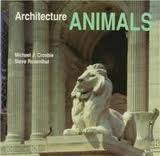by Judith Rusky Rabinor
Another valuable book that nevertheless is a bit difficult to write about because of the personal nature in how I relate to it. I am not in the habit of accepting review copies from publishers anymore, but I took this one because it seemed very applicable to my situation.
Written by a clinical psychologist who herself has survived divorce and successfully co-parented her children, the book is a guideline to finding a way to build a new relationship with the person you were once married to. Not only for the sake of your children, but also because, the book purports, if you\’re going to have to deal with this person for the rest of your life- and you likely will- you might as well make it as pleasant as possible. (That\’s not an exact quote).
Rabinor makes it clear that this is not easy, nor is it always possible. In almost every stage and situation discussed, she points out when it is unreasonable to expect things to progress positively and sometimes you have to just let things be, knowing you\’ve done your best. I appreciate that she always showed both sides of the situation- for example, in the segment on forgiveness she discusses forgiving your ex, and then also forgiving yourself. The gender pronouns are also frequently switched, so it feels evenly unbiased.
The book goes in detail through many emotional states and uncomfortable situations you will have to deal with when attempting to turn what was a bad relationship (after all, it fell apart) into a working friendship, no matter how limited that might be. Moving through grief, handling anger, letting go of past wrongs, becoming allies (mostly for your children), recognizing the difference between big obstacles and small minor irritants, and coming together for celebrations or family rituals are all discussed in detail. There\’s also an entire chapter devoted to the difficult prospect of meeting your ex\’s new partner and/or including that person in your wider family circle. Along the way Rabinor offers professional advice, points the reader to more detailed resources when needed and recommends how to find assistance if necessary. She also includes many examples from a wide variety of couples\’ situations- some showing how things can work out, others when it doesn\’t. The book is also replete with activities to help the reader work through issues or recognize things- like making lists, visualizing, journaling and so forth.
I admit I didn\’t do any of the exercises, although I certainly thought most of them through. One that seemed very vivid to me was the idea of writing down things that have upset, angered or hurt you, crumpling and tearing the paper, then burning it. Seems very cathartic. The book helped me with many things, like recognize what stage of grief I\’m in, realizing what negative responses I habitually make to strong emotions, and remembering that it\’s often more productive to state a need rather than blame or accuse someone…. Regardless, I know I\’m not ready yet to do most of the things this book offers help with, but it will be waiting on my shelf when I am.
I did have a few problems with the book. It has no index, so when I wanted to look for something specific sometimes it was tricky to remember which segment it was in. Also the headings are annoyingly large, especially considering how many of them there are. When a heading within a chapter is as large as the small paragraph it introduces, following immediately by another heading nearly as large, it just feels like too much. Sometimes I felt like the author was shouting the headings at me, or assumed I wouldn\’t noticed them unless they were really big. Maybe they had to fill up more page space to make the book longer, I don\’t know. It is rather slender but don\’t be fooled, there\’s a lot of valuable information in there.
Rating: 4/5 …….. 203 pages, 2012










